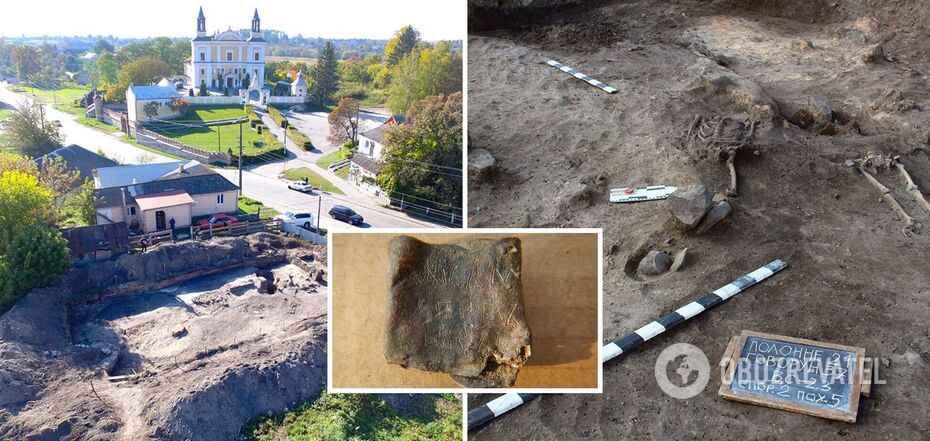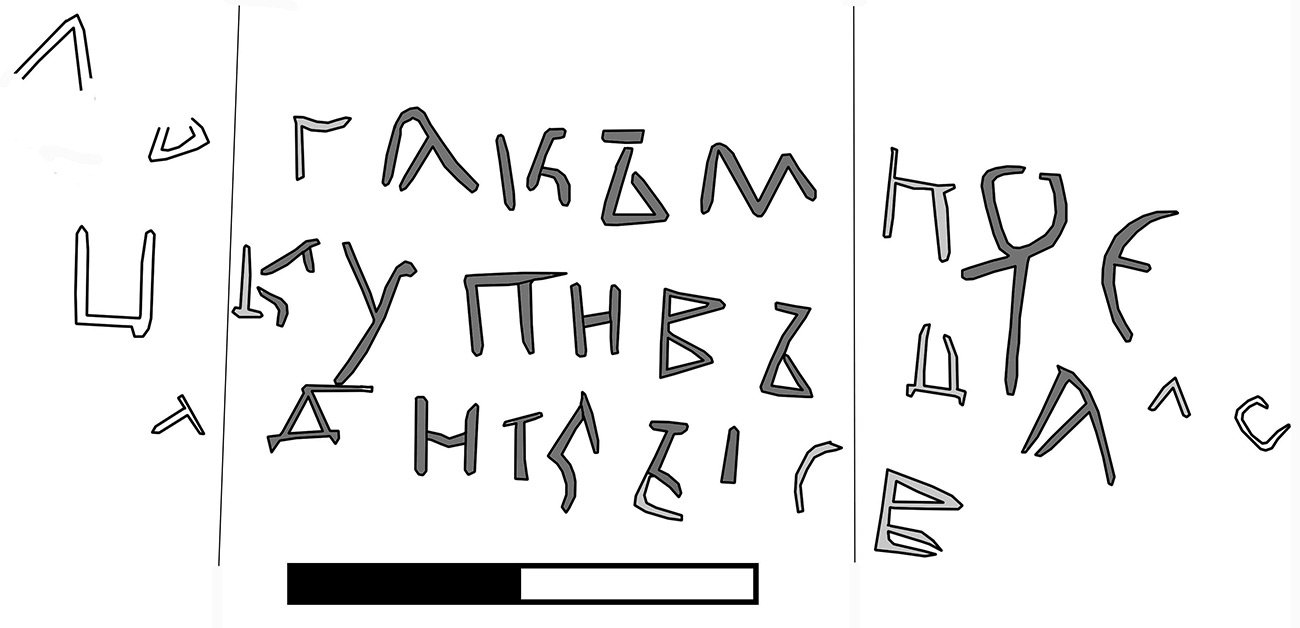Life
A unique leaden letter from the times of Kyivan Rus was found in Ukraine: no other museum has such a letter. Photo.
It is believed that in ancient times, records were mostly made on scrolls made of papyrus, parchment, birch bark or other similar materials. However, a unique scroll has been discovered in Ukraine: archaeologists have unearthed a charter from the times of Kyivan Rus, made on a lead plate.
According to BBC News Ukraine, the artefact was found by a group of archaeologists led by scientist and musician Pavlo Nechytailo, who studied the ancient remains of the city of Polonne in the Khmelnytsky region. During the excavation of a post-Mongolian burial site, the scientists came across the remains of a pyre in which they found fragments of pottery dating back to the 11th and 12th centuries.
And in the soil with which it was covered, they found a lead plate rolled five times, covered with ancient inscriptions.
Scientists already knew that in the days of Kyivan Rus, messages were sometimes transmitted using leaden letters. But this was the first time such a find had been unearthed in Ukraine, and the scientists did not know how to properly unfold the unusual note.
Therefore, they had to involve Timur Bobrovsky, an expert in Old Slavic graffiti from the St Sophia of Kyiv Conservation Area, and artist-restorer Viktor Holub. The work on the letter lasted several months.
As a result, the researchers received a small lead plate weighing 15.7 g, severely deformed, cracked and with traces of corrosion. The pigeon had to clean and strengthen the plate under a 23x magnification microscope. It turned out that the text was applied to it on both sides. It was three lines of Cyrillic inscriptions applied to the entire length of the plate. Almost all of the letters were preserved and we managed to read them.
It turned out that two letters were written on one plate. Each of them began with the word "letter". The first message, translated into modern language, read as follows: "A letter from Khitra to both Mych and Hirla: gather the cattle together, instead of leading them to Kyiv without Mych." Presumably, this was a letter from an owner named Khytr, who ordered his younger relatives or workers, Mych and Hyrl, to return to Kyiv.
The second message is addressed to a man named Mitch, mentioned in the first text. It can be translated as follows: "A letter to Mitch: my mother is ill. And Dorozh wrote, but he didn't give it to you. So go home". In other words, the addressee was informed that he had not yet received a letter, but that he had to return home because of his mother's illness. Presumably, the task of collecting and driving the cattle thus fell on Hirla's shoulders.
Scholars date these letters to the mid-12th century, about 100 years before the Mongol-Tatar invasion. This discovery also suggests that on the territory of modern Ukraine, people could have used other media to transmit information, not birch bark (a layer of birch bark), as was done in the territory that now belongs to Russia, but other media, including lead, a common and affordable, albeit rather expensive, metal. Its advantage was that such a plate could be heated, unglued, and reused as many times as necessary. That is, unlike birch bark, lead was reusable. Letters could also be applied to it without any extra effort.
Regarding the charter found in Polonne, researchers assume that it could have been written either in Polonne, 200 kilometres west of Kyiv, or in the capital itself. At that time, Polonne was part of the Kyiv principality, and the prince appointed it to collect tithes for the church of the same name in Kyiv. But the message never reached the addressee, as it remained unopened.
The discovery also suggests that most people in the Kyivan lands knew how to read and write, and that the owner could thus address his workers who were grazing cattle.
Scientists are deciding where to keep the unique artefact. It was expected that a detailed report on the discovery with all the necessary assessments, legalisation of the finds and assignment of security numbers would be completed by May 2022, after which their further fate could be decided. However, Ukraine was invaded by the Russians and the archaeologists who were excavating in Polonne went to war. Therefore, the question of where the lead letter will end up remains open.
The day before, OBOZREVATEL reported that in Turkey, archaeologists managed to find the heads of ancient Greek statues that could be up to 2,000 years old.
Only verified information is available on our Obozrevatel Telegram channel and Viber. Do not fall for fakes!





























